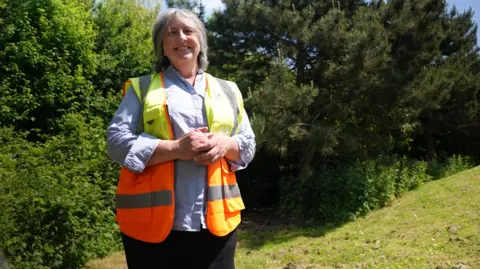City to be covered by 'urban forest' within decade
 BBC
BBCA quarter of a Welsh city will be covered by tree canopies within 10 years due to a new plan to boost its "urban forest".
Almost 30,000 trees will be planted in Newport to supplement about 250,000 existing trees.
Wales was the first country in the world to measure its urban tree coverage.
The council hopes these trees and others planted by private developers and landowners will take canopy cover in Newport - which at 18% had the highest proportion of any Welsh city in 2016 - to 25%.
Joanne Gossage, service manager for environment and leisure at Newport council said the city had "green oasis" parks.
She said: "We feel that Newport is a very green city and we don't think it's too far of a stretch to get to that 25%.
"People's perception of an urban forest is something dark, perhaps menacing and dingy. It's not. It's about trees making attractive frameworks in limited open space, it can be in a street, creating a good shady habitat above people's heads.
"The economic benefit of planting green infrastructure has a direct link to people wanting to be in a place - to live, for recreation or to visit."

Using nationwide aerial photography, canopy spread in Wales was mapped across towns and cities, with the results published in 2016.
Natural Resources Wales found Newport had 18% canopy cover, compared with 17.4% in both Swansea and Wrexham, and 15.4% in Cardiff.
Newport alone estimates its current urban forest is worth £2.2m a year to the city and stores 76,000 tonnes of carbon.
The council said it would grow trees on its own land, but hoped private developers and landowners would do the same to add to the city's canopy cover.

Newport resident Daniel Key, 37, said "it would be lush" to have a quarter of the city covered by canopies.
He said: "It's a really built up city, quite run down at the moment, with a lot of boarded up houses and businesses gone, it's very much a car city, it would be nice to have more trees, for cleaner air.
"As long as they're thinking about jobs as well, locally, I'll be all for it."
Some of the most important green infrastructure are street trees, which Ms Gossage said acted like a "green lung above people's heads".
More than a third of all the trees in the city are in residential areas, with the most common species being Leyland cypress, birch and hawthorn.
Ms Gossage said increasing canopy cover would have a cooling effect, help prevent flooding, improve biodiversity and help people's health and wellbeing.
She said: "We are making this happen with very small resources internally.
"We are not having a big ask on the council's budge because we are being inventive and adventurous, looking for money outside of our own budget."
